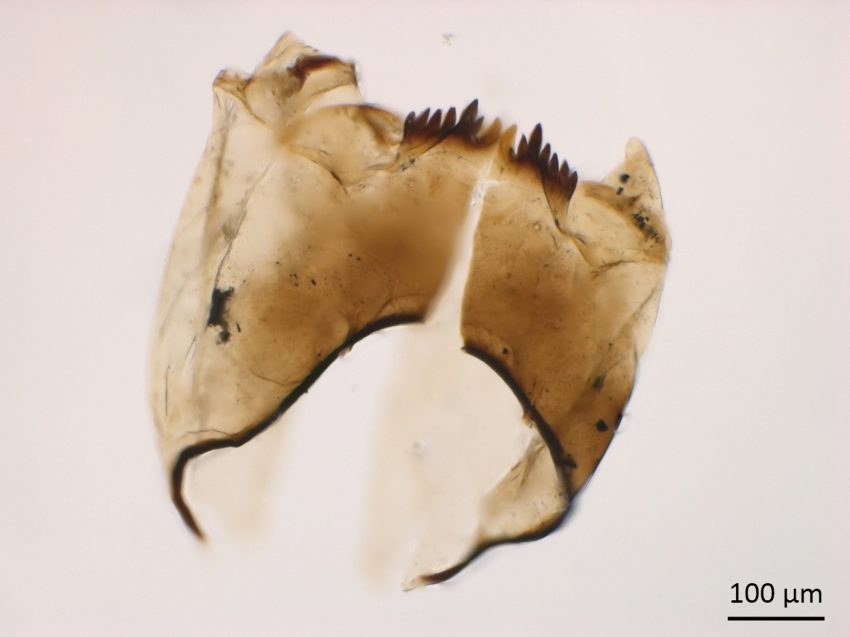Summer 300,000 years ago TU Braunschweig reconstructs temperature development with chironomids
What was the summer like in northern Germany 300,000 years ago? Was it warmer or colder? How much did the temperatures change? To find out, scientists at Technische Universität Braunschweig analysed sediments from the former Schöningen open-cast mine, one of the most important archaeological sites in the world. Their research focused on the fossils of a tiny insect: the sugar midge.

Head capsule of a chironomid larva (Microtendipes pedellus). Photo credits: Sonja Rigterink/TU Braunschweig
In the context of climate change, it is becoming increasingly important to look at the warm periods of the Middle Pleistocene (781,000 to 127,000 years ago) in order to better understand the climate of the past. These periods can serve as a basis for comparison with the natural climate variability of the current post-glacial (Holocene) warm period, providing valuable insights into today’s human-induced global warming. This will also allow scientists to develop more accurate climate models.
Sediments with spears and mosquito larvae
The former open-cast mine in Schöningen is famous for the discovery of the world’s oldest wooden hunting weapons. The 300,000-year-old spears were well preserved in the limestone-rich sediments of a former lake and today bear witness to the extraordinary skills of “Homo heidelbergensis”, an ancestor of Neanderthals, who hunted forest elephants and wild horses on the shores of the lake.
In addition to the spears, mosquito larvae have also been preserved in the sediment layers, providing information on past environmental parameters. A current research project in Schöningen, led by the Institute for Geosystems and Bioindication (IGeo) at TU Braunschweig, is looking at so-called bioindicators. Aquatic microorganisms can serve as “early warning systems” because they react quickly and sensitively to changes in their habitat. The fossilised remains of chironomid larvae, ostracods and diatoms preserved in the sediments can provide information on temperature changes, eutrophication (nutrient enrichment) or water level fluctuations.
Temperatures between 16 and 22 degrees Celsius
“The sugar midge larvae are particularly suitable for reconstructing past temperature trends because their metabolism, nutrition and reproduction are largely controlled by water temperature,” explains PhD student Sonja Rigterink. “We use statistical methods to compare the fossil mosquito species assemblages with a modern calibration dataset that contains the temperature optima of the mosquito species, i.e. the temperature range in which the species feels most comfortable.”
The analysis of the fossil mosquitoes from the sediments of the so-called Reinsdorf sequence from Schöningen has now shown that summers ranged between 16 and 22 degrees Celsius. During the cold steppe phases, temperatures were higher than in the more temperate forest phases due to a more pronounced continental climate with hot summers and cold winters, as is still the case in Russia, for example. Compared to today, summer temperatures 300,000 years ago were on average between 0.5 degrees Celsius lower (in the forest phases) and up to 2 degrees higher (in the steppe phases). “Unfortunately, we cannot reconstruct winter temperatures from the mosquitoes, because the main life stages of the mosquitoes are spring and summer,” says Sonja Rigterink.
The latest research results have recently been published in two articles in the journal “Boreas“, which is dedicated to interdisciplinary Quaternary research.
